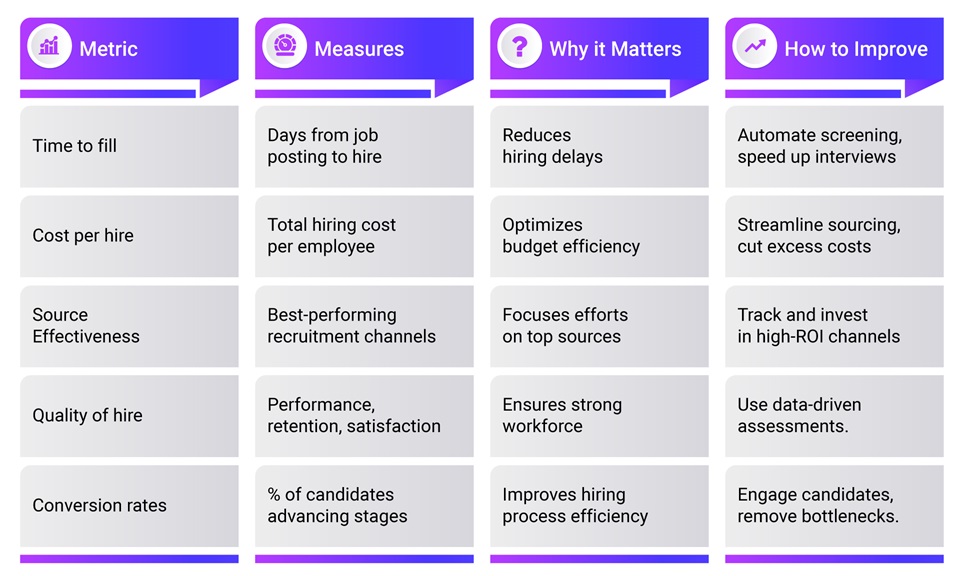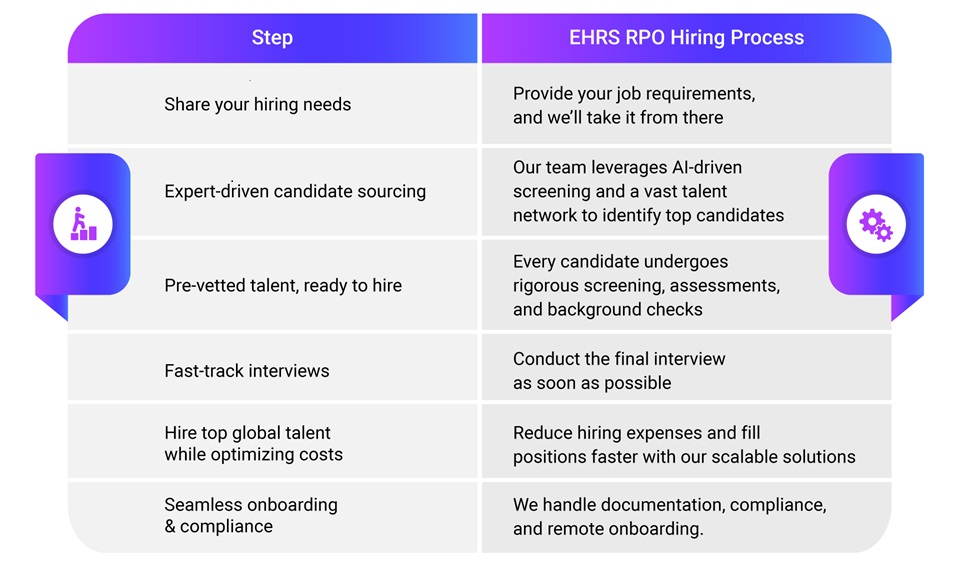"Many businesses don’t realize they’re losing top candidates until it’s too late."
A company might have a high-priority role open for weeks, but by the time they sift through resumes, schedule interviews, and finalize decisions, the best candidates have already moved on. The traditional hiring process, with its heavy reliance on manual screening and slow decision-making, often leads to missed opportunities. In a competitive talent market, companies that fail to adapt their hiring strategies risk falling behind.
Recruitment today looks nothing like it did a decade ago. Workforce expectations have shifted, technology has advanced, and the rise of remote and global hiring has reshaped the talent landscape. Yet, many organizations still rely on outdated hiring practices that are slow, inefficient, and prone to bias. These traditional methods often struggle to keep up with business demands, resulting in longer hiring cycles, higher costs, and the loss of skilled candidates to more agile competitors.
To attract and retain top talent, businesses must rethink their approach to hiring. This means moving beyond rigid, manual processes and embracing technology-driven recruitment strategies that enhance efficiency, improve candidate experience, and ensure better hiring outcomes.
This blog will explore why traditional recruitment methods are no longer effective and how innovative hiring solutions are transforming the way companies build their workforce.
The Pain Points of Traditional Recruiting
Lengthy Hiring Processes Lead to Lost Talent
An interview with countless rounds, lengthy decision-making timelines, and multiple hiring steps are the usual problems with the traditional hiring process. Moreover, top candidates are off the market within 10 days, yet traditional hiring processes can take weeks or even months.
The result?
Organizations lose high-caliber talent to more agile competitors.
Skills Gaps and Talent Shortages Are Growing
Industries like healthcare, technology, and finance have been experiencing critical talent shortages. Traditional hiring that is solely based on degrees and experience cannot completely address this skills gap.
The Rise of Remote and Global Talent Markets
2020 accelerated the shift to remote work due to the pandemic, making geographical restrictions less relevant in hiring decisions. Companies that embrace global hiring strategies and remote workforces gain a competitive advantage by tapping into diverse expertise.
By utilizing staff augmentation solutions for businesses, organizations can access a global workforce without the constraints of traditional hiring models.
Candidate Expectations Have Changed
Today’s workforce, especially Millennials and Gen Z, values more than just a paycheck. They prioritize:
- Flexible work agreements
- Career growth opportunities
- Diversity, Equity, and Inclusion (DEI)
- Work-life balance
To meet these evolving expectations and attract top talent, companies must adopt recruitment strategies that align with these priorities. This has led to the rise of innovative hiring techniques that leverage technology and data-driven insights.
The Evolution of Recruitment: Innovative Hiring Strategies
Modern recruitment strategies incorporate advanced tools and methodologies to streamline the hiring process, improve efficiency, and enhance the candidate experience. Here are some key approaches:
- Artificial Intelligence (AI) Technology: By automating tasks such as filtering, screening filtering, and matching candidates to job openings, it streamlines the process. It also helps to identify the best candidates by analyzing their skills and experience.
Social Media Platforms: Social media platforms like LinkedIn, Facebook, and Twitter are used to post job openings, engage with potential candidates, and build the employer brand. This method has made it possible to reach a wide audience as well as target specific demographics.

- Applicant Tracking Systems (ATS): ATS software helps manage and filter job applications. This makes it easier to find the best candidates and saves time and resources by automating administrative tasks.
- Virtual Interviews: Virtual interviews allow candidates to interact with the company remotely. This process provides a more immersive experience, saves time, and can be particularly useful for remote or international candidates.
- Talent Pool: To maintain a database of previous candidates who were not hired but showed potential, a talent roster is crucial. When a new vacancy arises, these candidates can be easily contacted and considered for the position.
- Internal Recruitment: This method involves promoting from within the organization. It is cheaper and can provide better motivation and engagement for employees as it shows a commitment to their career growth.
- Collaborative Hiring: Involving line managers and executives in the hiring process will ensure that the selected candidate meets the requirements and expectations of all stakeholders.
- Employer Branding: By creating a strong employer brand, a company can attract top talent. It involves showcasing the company's culture, values, and benefits to potential candidates.
As companies refine their hiring strategies, the use of data-driven insights is becoming increasingly crucial. Traditional methods alone are no longer enough to compete. This shift has paved the way for a more analytical approach—one that maximizes efficiency and optimizes decision-making.
The Rise of Data-Driven Recruitment and RPO
Data-driven recruitment leverages analytics and metrics to inform hiring decisions, enabling companies to identify top talent, streamline processes, and enhance the candidate experience. RPO involves outsourcing all or part of the recruitment process to experts who specialize in data-driven strategies and innovative hiring solutions
Benefits of Data-Driven RPO
- Better Hiring Decisions: By analyzing candidate data, market trends, and hiring metrics, companies can make informed decisions that lead to better hiring outcomes. This data-driven approach eliminates guesswork and bias, ensuring that the best candidates are selected for the job.
- Improved Efficiency: RPO providers leverage technology and automation to streamline the hiring process, reducing time-to-fill and administrative burdens. This increased efficiency allows companies to focus on their core business while ensuring that their recruitment needs are met.
- Cost Savings: Data-driven insights enable companies to identify the most effective sourcing channels and optimize their recruitment budgets. RPO providers can also negotiate better rates with vendors and suppliers, leading to significant cost savings.
- Enhanced Candidate Experience: Personalized communication and engagement strategies, informed by data and analytics, can create a more positive candidate experience. This not only attracts top talent but also strengthens the employer's brand.
- Scalability and Flexibility: RPO solutions can be tailored to meet the specific needs of an organization. It offers the flexibility to scale up or down as needed, allowing companies to respond quickly to changing market conditions and business demands.
Key Data Metrics for Recruitment Success
When a company relies on instinct alone, it won’t make the cut anymore. They need to track key recruitment metrics like in the table below, that will help refine their recruitment strategies and stay ahead in the talent game.

The Future of Recruiting
The future of recruiting lies in the integration of data-driven strategies, advanced technology, and a focus on candidate experience. Companies that embrace these trends will be well-positioned to attract, engage, and retain top talent in the years to come.
Traditional recruiting methods are no longer effective. The future of recruiting lies in the integration of data-driven strategies, advanced technology, and a focus on candidate experience. Companies must embrace innovative solutions, such as data-driven RPO and advanced technology, to stay competitive in the war for talent.
Exela HR Solutions can help.
At Exela HR Solutions, we empower businesses with smart, scalable, and cost-effective recruitment solutions. Whether you need faster hiring, global talent access, or streamlined recruitment through AI-driven processes, our RPO services provide end-to-end support to build a high-performing workforce.
Here’s how hiring looks with Exela HR Solutions (EHRS) – RPO Services:

Let’s Build Your Dream Team—Faster, Smarter, and Cost-Effectively!
Don’t let hiring roadblocks slow your growth. Tap into our expert-driven, AI-powered RPO solutions and secure top talent effortlessly. Partner with us, today!
